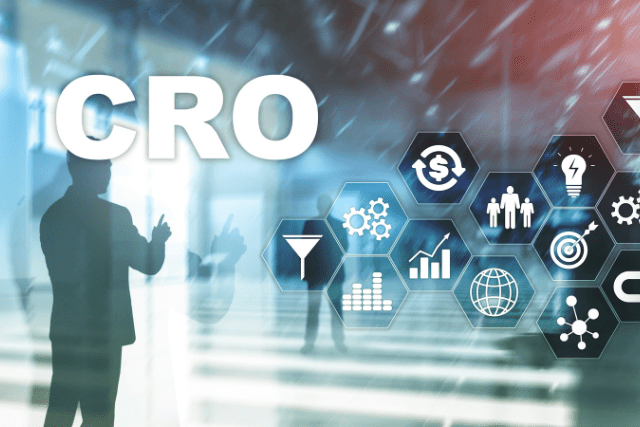Welcome to the world of e-commerce advertising, where maximizing return on investment (ROI) is the name of the game. In this rapidly evolving field, it’s not just about driving traffic to your website or social media pages; it’s about converting that traffic into revenue and growth.
That’s where our expertly crafted strategies come in. We’ll show you how to optimize your e-commerce advertising campaigns, leveraging advanced techniques and cutting-edge tools to maximise your marketing budget.
So, buckle up and get ready to revolutionize your e-commerce advertising game. Let’s maximize that ROI together!
Table of Contents
Key Takeaways
- Setting clear and specific goals aligned with the overall marketing strategy is crucial for maximizing ROI in e-commerce advertising.
- Creating high-quality content that provides value to users and implementing SEO best practices are essential for attracting and engaging the target audience.
- Utilizing paid advertising wisely, leveraging social media marketing, and targeting specific audiences through demographic and interest-based targeting can maximize the effectiveness of advertising campaigns.
- Optimizing website performance, utilizing influencer marketing, and offering financial incentives such as discounts and customer loyalty programs can drive customer engagement and increase sales, ultimately maximizing ROI.
Useful Basics
ROI, or Return on Investment, is a critical metric for e-commerce businesses that measures the profitability of marketing efforts. It helps you understand the effectiveness of your campaigns and where to allocate your marketing budget for the best results. A high ROI means your ecommerce marketing strategies are working well, driving sales and growth for your business.
Setting Clear Goals
Setting clear goals is a crucial first step in developing an effective e-commerce advertising strategy that maximizes return on investment. Without clear goals, businesses risk wasting time and resources on ineffective tactics that do not align with their objectives.
When setting goals for e-commerce advertising, defining specific, measurable, and realistic objectives is essential. These goals should be aligned with the business’s overall marketing strategy and tailored to the target market.
To set clear goals, businesses should consider setting intermediate goals for awareness, engagement, and positive attitudes towards their brand.
These goals help to gauge the effectiveness of advertising efforts in reaching and resonating with the target audience. Additionally, it is important to establish goals for key performance metrics that track the customer journey, such as conversion rates, average order value, and customer lifetime value.
By regularly reviewing and updating these goals, businesses can ensure they remain realistic and challenging, driving continuous improvement in their e-commerce advertising strategy.
Understanding Target Market
To develop an effective e-commerce advertising strategy, businesses must deeply understand their target market’s demographics, interests, and online behaviour. This knowledge allows businesses to tailor their marketing efforts and create content that resonates with their target audience.
Creating detailed buyer personas is a crucial step in understanding the target market. By developing these personas, businesses can gain insights into the characteristics and preferences of their potential customers.
| Key Factors | Buyer Personas |
|---|---|
| Demographics | Age, gender, location, income level |
| Interests | Hobbies, preferences, lifestyle choices |
| Online Behavior | Browsing habits, preferred platforms, social media usage |
By analyzing these factors, businesses can decide where to focus their marketing efforts and how to tailor their messaging and content to appeal to individual buyer personas.
It is important to avoid creating generic messaging for all potential customers and instead focus on modifying content to appeal to specific personas. This targeted approach ensures that the marketing efforts will more likely capture the intended audience’s attention and drive conversions.
Understanding the target market is essential for successful e-commerce advertising. By investing time and resources into gathering data and developing buyer personas, businesses can create marketing strategies that resonate with their target audience, resulting in higher engagement and increased ROI.
Creating High-Quality Content
Creating high-quality content is a crucial component of an effective e-commerce advertising strategy. In content marketing and SEO, high-quality content is vital in attracting and engaging the target audience.
Research shows that around 80-90% of content should provide users value rather than be promotional. This means businesses must focus on delivering informative, educational, and entertaining content that resonates with their audience.
To create high-quality content, authenticity and consistent branding are key. Businesses should strive to maintain a genuine and authentic voice throughout their content, aligning it with their brand values and identity.
Options for content creation can include behind-the-scenes views and engaging the community. By involving the audience in the content creation, businesses can foster a sense of community and forge deeper connections with their customers.
Also, creating high-quality content involves sharing efforts that support shared values with the target market. Businesses can establish themselves as thought leaders by addressing topics and issues important to their audience and building trust with their customers.
Implementing SEO Best Practices
Implementing SEO best practices improves search engine visibility and drives organic traffic to your e-commerce website. By following these proven strategies, you can increase your website’s rankings on search engine results pages (SERPs) and attract more potential customers.
Here are some key SEO best practices that you should consider implementing:
| Best Practice | Description |
|---|---|
| Keyword Research | Conduct thorough keyword research to identify valuable and relevant keywords for your website. |
| On-Page Optimization | Optimize your website’s structure, meta tags, and content to improve search engine visibility and rankings. |
| Content Creation | Create high-quality, relevant, and valuable content incorporating targeted keywords to attract and engage your audience. |
| Link Building | Build high-quality backlinks from authoritative and relevant websites to increase your website’s domain authority. |
| Performance Tracking | Regularly monitor and analyze your website’s performance using tools like Google Analytics to make data-driven SEO decisions. |

Using Paid Advertising Wisely
Using paid advertising strategically is crucial for maximizing the effectiveness and return on investment of your e-commerce advertising campaigns. Here are three key strategies to help you make the most of your paid advertising efforts:
- Monitor and track clicks: By carefully monitoring and tracking clicks, you can accurately calculate your return on investment when using online advertising platforms. This data will allow you to determine the effectiveness of your paid ads and make informed decisions about your advertising budget.
- Optimize targeting and messaging: To achieve higher returns on investment, it is essential to refine your advertising campaigns continually. By optimizing your targeting and messaging, you can ensure that your ads are reaching the right audience with the right message, increasing the likelihood of conversions.
- Align ad content with landing pages: Creating landing pages aligned with your ads’ content is crucial for providing a seamless user experience. When your landing pages are relevant and compelling, you can maximize conversions and drive more sales.
Google Ads is a powerful platform that allows e-commerce businesses to display ads across Google’s vast network. It includes various ad formats like search, display, and shopping ads, which can be tailored to target specific audiences.
Pay-per-click (PPC) advertising is a powerful tool for e-commerce businesses. Platforms like Google Ads can drive targeted traffic to your website, leading to immediate sales. You can achieve a high ROI from your PPC campaigns by carefully selecting keywords and optimising ad spending.
Utilizing Email Marketing Effectively
Email marketing is a highly cost-effective strategy for engaging and reaching customers. With the right approach, businesses can maximize their ROI and achieve their e-commerce advertising goals.
To utilize email marketing effectively, businesses should consider the following strategies:
| Strategy | Benefits |
|---|---|
| Personalize emails | Increases open and click-through rates |
| Segment email lists | Tailors content based on customer preferences and behaviours |
| Use compelling subject lines | Captures attention and encourages email opens |
| Clear call-to-action | Drives customer engagement and conversions |
| Analyze campaign performance | Identifies areas for optimization and future success |
Personalization is key in email marketing. Businesses can significantly improve open and click-through rates by addressing customers by name and tailoring the content to their interests. Segmenting email lists allows for more targeted messaging, ensuring customers receive relevant content that resonates with them.
Compelling subject lines capture attention and entice customers to open emails. Clear call-to-actions guide customers towards desired actions, such as purchasing or signing up for a newsletter.
Analyzing email campaign performance provides valuable insights for optimization of ecommerce business. Businesses can identify what works and make data-driven decisions to improve future email marketing efforts by tracking open rates, click-through rates, and conversions.
Leveraging Social Media Marketing
Social media marketing is a powerful strategy for businesses to engage with their target audience and drive meaningful results. By leveraging social media, businesses can maximize their ROI and increase their e-commerce advertising efforts.
Here are three advanced strategies for leveraging social media marketing:
- Targeted Advertising: Social media platforms provide businesses with the opportunity to reach their specific target audience through targeted advertising. By utilizing the demographic and interest-based targeting options available on platforms like Facebook and Instagram, businesses can ensure that their ads are seen by the right people, increasing the likelihood of conversions.
- User-Generated Content: Incorporating user-generated content into social media marketing efforts can help build authenticity and trust with the target audience. Encouraging customers to share their experiences and opinions about the brand or product creates a sense of community and can increase engagement and conversions.
- Visual Content: Visual content, such as images and videos, can significantly increase engagement on social media platforms. Utilizing visually appealing and compelling content in social media posts can capture users’ attention and encourage them to take action, resulting in higher conversion rates.

Optimizing Website Performance
To optimize website performance and enhance user experience, businesses can implement various strategies such as A/B testing, analyzing website analytics, improving loading speed, ensuring responsive design, and utilizing clear navigation and intuitive user interface.
A/B testing allows businesses to experiment with different variations of website elements, such as buttons, headlines, and images, to determine which version performs better. By analyzing website analytics, businesses can gain insights into user behaviour, identify areas for improvement, and make data-driven decisions to enhance overall website performance.
Improving loading speed is crucial as slow websites can lead to high bounce rates and dissatisfied users. By optimizing images, reducing server response time, and leveraging caching techniques, businesses can ensure faster loading times and provide a seamless browsing experience.
Ensuring responsive design is essential in today’s mobile-driven world. With more users accessing websites through smartphones and tablets, businesses must design websites that adapt to different screen sizes and provide an optimal browsing experience on all devices.
Clear navigation and an intuitive user interface are key to guiding visitors and improving engagement in ecommerce stores. By organizing content, simplifying menus, and providing clear calls to action, businesses can enhance user experience and encourage visitors to explore further.
Incorporating these advanced strategies for optimizing website performance will enhance user experience and possibly offer the best ROI in e-commerce advertising efforts.
| Strategies | Benefits |
|---|---|
| A/B Testing | Determine the best-performing website elements |
| Website Analytics | Gain insights into user behaviour and identify areas for improvement |
| Loading Speed Optimization | Reduce bounce rates and provide a seamless browsing experience |
| Responsive Design | Cater to a wider audience and improve accessibility |
| Clear Navigation and Intuitive UI | Guide visitors and improve engagement |
Utilizing Influencer Marketing
Influencer marketing can significantly expand a business’s reach and tap into a wider audience base. By collaborating with influencers who align with the brand’s values and target market, businesses can create authentic partnerships that resonate with the influencer’s audience.
This form of marketing allows businesses to leverage the trust and credibility that influencers have built with their followers, resulting in increased brand awareness and customer engagement.
To maximize ROI in influencer marketing, businesses should track the performance of their influencer campaigns. This can be done by using unique discount codes or affiliate links to measure conversions and determine the effectiveness of the partnership.
By analyzing the data and measuring ROI, businesses can make data-driven decisions and optimize their influencer marketing strategies for better results.
Incorporating influencer marketing into e-commerce advertising is an advanced strategy that can yield substantial returns. By utilizing influencers, businesses can tap into new audiences, increase brand visibility, and generate more sales.
To maximize ROI, businesses must select influencers carefully, create authentic partnerships, and track campaign performance. This allows businesses to make informed decisions and continuously improve their influencer marketing efforts.
Measuring and Analyzing Performance
One essential aspect of effective e-commerce advertising is the measurement and analysis of performance data. By utilizing analytics tools, businesses can track and measure key performance indicators to gain valuable insights into the effectiveness of their marketing strategies. Regularly analyzing this data allows businesses to identify trends and patterns, make data-driven decisions, and optimise their marketing tactics.
Measuring and analyzing performance data provides businesses with a clear understanding of their advertising efforts’ return on investment (ROI). It allows them to monitor the success of their campaigns and make necessary adjustments to ensure that their marketing efforts are effective.
This data-driven approach also helps businesses refine and improve their marketing strategies over time based on the insights gained from analyzing performance data.
One way to measure the performance of e-commerce advertising is through attribution modelling. This technique assigns credit to various touchpoints in the customer journey, such as email newsletters or social media ads, to determine their impact on conversions.
By understanding the contributions of different marketing channels, businesses can optimize their advertising spend and allocate resources to the most effective channels.
Use Google Analytics in conjunction with Google Ads to track the performance of your campaigns. Analyzing click-through rates, conversion rates, and cost per conversion helps make informed decisions to improve your campaigns.
Advertise Your Store
How can you effectively advertise your e-commerce store to reach a wide audience and drive sales?
Advertising your store is an essential component of maximizing ROI in e-commerce advertising. Using various advanced strategies, you can effectively promote your online store and increase sales. Here are three advanced techniques to consider:
- Utilize advertising platforms: Platforms like Google AdWords, Facebook Ads, and Instagram Ads offer powerful targeting options to reach a wide audience. By leveraging these platforms, you can effectively showcase your products to potential customers and drive traffic to your store.
- Work with influencers: Influencer marketing has become an increasingly effective tool for promoting e-commerce stores. Collaborating with influencers in your niche can help you reach a highly engaged audience and generate sales. Use Triple Whale Affluence Hub to track the ROI of your influencer and affiliate campaigns.
- Use email and SMS marketing: Email and SMS marketing are highly effective in driving sales and customer engagement. By segmenting your lists and personalizing your messaging, you can deliver targeted offers and updates to your audience, increasing the chances of conversion.
Implement Attribution Modeling
Attribution modelling is a crucial tool for businesses to identify the most effective marketing channels and maximize their paid advertising efforts. By implementing attribution modelling, businesses can measure the impact of their marketing efforts and allocate their resources to the channels that provide the highest return on investment (ROI).
This advanced strategy allows businesses to gain insights into the customer journey and understand how different marketing touchpoints contribute to conversions.
One way to implement attribution modelling is by utilizing data analytics tools to track and analyze customer behaviour on the website. These tools can provide valuable information about which channels drive traffic, engagement, and conversions.
Additionally, businesses can leverage first-party, server-side attribution data, such as Triple Pixel, to comprehensively understand the customer journey.
Another effective strategy is retargeting to drive sales and keep the brand in mind. By retargeting customers who have previously interacted with the website or shown interest in the products, businesses can increase their chances of converting them into paying customers.
Collaborate With Influencers
Collaborating with influencers can be a highly effective strategy for promoting your products and reaching new audiences. By leveraging influencer marketing, you can increase brand awareness and drive sales.
Here are three reasons why collaborating with influencers should be a part of your advanced e-commerce advertising strategy:
- Increased credibility and trust: Influencers have built a loyal following and are seen as trusted authorities in their respective niches. When they endorse your products, their followers are more likely to trust and purchase them, leading to higher conversion rates.
- Expanded reach: Influencers have a dedicated fan base that aligns with your target market. By collaborating with influencers who resonate with your audience, you can tap into their reach and expose your products to a wider audience. This can result in increased brand visibility and potential new customers.
- Authentic storytelling: Influencers excel at creating engaging content that tells stories and connects with their followers. When they authentically endorse your products, it feels more like a recommendation from a friend rather than a blatant advertisement. This storytelling approach can significantly impact purchase decisions and drive conversions.
To maximize the ROI of your influencer collaborations, ensure that you select influencers who align with your brand values and track the performance of your campaigns.
Use unique discount codes or affiliate links to attribute conversions and measure the effectiveness of each influencer’s impact. By incorporating influencer marketing into your e-commerce advertising strategy, you can unlock new opportunities for growth and success.

Drive Sales With Email Marketing
Email marketing is a highly effective strategy for driving sales and increasing ROI in e-commerce. It creates leads and converts potential customers, making it a valuable business tool.
Businesses can significantly enhance their email marketing results by segmenting email lists and personalizing messages. Additionally, SMS marketing campaigns can be utilized to send targeted messages to customers, keeping them updated on new products and offers. Personalizing SMS marketing based on customer behaviour can further boost engagement and sales.
Email and SMS marketing are powerful tools that can drive sales and maximize ROI in e-commerce. By leveraging these advanced strategies, businesses can effectively reach their target audience and generate more sales. Furthermore, email marketing allows for direct customer communication, providing an opportunity to build relationships and establish brand loyalty.
To maximize the effectiveness of email marketing, businesses should focus on creating high-quality content that resonates with their audience. They should also utilize automation tools to streamline the process and ensure timely delivery of messages. By monitoring and analyzing the performance of email campaigns, businesses can identify areas for improvement and optimize their strategies for better results.
Create SMS Marketing Campaigns
Businesses can create SMS marketing campaigns to effectively engage and convert potential and former customers that deliver targeted messages and drive sales. SMS marketing is a powerful tool that allows businesses to connect with their audience directly through text messages. Here are three advanced strategies for creating successful SMS marketing campaigns:
- Personalize SMS messages: By segmenting your SMS list and personalizing your messages based on customer behaviour, you can enhance engagement and increase the chances of conversion. Personalization shows customers that you understand their preferences and needs, making them more likely to respond to your offers.
- Provide customer incentives: SMS marketing campaigns can create exclusive customer incentives such as discounts, promotions, or early access to new products. By offering these incentives through SMS, you can drive loyalty and encourage customers to purchase, maximizing your ROI.
- Keep customers updated: SMS marketing campaigns are a great way to keep customers informed about new products, upcoming sales, or limited-time offers. By regularly sending targeted messages, you can stay top-of-mind with your audience and increase their likelihood of purchasing.
Offer Financial Incentives
Financial incentives are highly effective in driving customer engagement and increasing sales for e-commerce businesses. By offering discounts, coupons, and exclusive offers, businesses can incentivize customers to shop at their stores.
However, it is crucial to be mindful of not devaluing the products or services while providing these incentives. To maximize ROI and ensure the success of financial incentives, businesses can leverage affiliate marketing and referral programs.
This strategy not only incentivizes customers but also increases sales through word-of-mouth marketing. Another effective strategy is the implementation of customer loyalty programs. These programs reward repeat purchases and encourage brand loyalty, resulting in long-term customer relationships and increased sales.
Businesses can use financial management solutions to track and analyze the effectiveness of financial incentives and other advertising strategies. These solutions provide insights into revenue, expenses, and ROI, enabling businesses to make data-driven decisions and optimize their e-commerce advertising efforts.
| Financial Incentives | Benefits |
|---|---|
| Discounts | Encourages customers to make immediate purchases |
| Coupons | Drives customer traffic and repeat purchases |
| Exclusive offers | Creates a sense of exclusivity and urgency |
Keywords: offer financial incentives, maximize ROI, advanced strategies, e-commerce advertising, customers based.
Leverage Affiliate Marketing
Leveraging affiliate marketing is a highly effective strategy for e-commerce businesses to expand their reach and drive sales. By partnering with affiliates, businesses can tap into their networks and target people interested in their products or services. Here are three reasons why leveraging affiliate marketing increases the effectiveness of e-commerce advertising:
- Increased brand exposure: Affiliate marketing allows businesses to reach new audiences they may not have been able to target through traditional advertising channels. Affiliates promote the products or services to their audience, increasing brand awareness and exposure.
- Drive revenue: With affiliate marketing, businesses only pay for results. This means they only need to pay affiliates when they successfully drive a sale or conversion. This cost-effective approach can help businesses drive revenue without spending a large upfront investment on advertising.
- Leverage influencer partnerships: Influencers play a crucial role in affiliate marketing campaigns. By partnering with influencers with a large and engaged following, businesses can leverage their influence to promote their products or services and drive sales. Influencers can sway their audience’s purchasing decisions, making them valuable partners in affiliate marketing.
Promote Products on Social Media
Promoting products on social media is a powerful strategy for e-commerce businesses to increase brand visibility and engage with their target audience. With the ever-growing popularity of social media platforms, businesses have a unique opportunity to showcase their products, connect with customers, and drive sales. By leveraging social media, businesses can maximize their advertising efforts and effectively promote their products to a wider audience.
To effectively promote products on social media, businesses should focus on creating high-quality content that resonates with their target market. Regularly posting engaging and informative content can help build relationships with followers and keep them informed about updates and special deals. Additionally, working with influencers can further amplify the reach of product promotions and enhance brand credibility.
Here is a table showcasing various ways businesses can promote their products on social media:
| Strategy | Description |
|---|---|
| Regular content posting | Consistently post high-quality content to engage with followers and share product updates and special deals. |
| Influencer marketing | Collaborate with influencers to promote products and leverage their social media presence and influence. |
| Product announcements | Utilize social media platforms to announce new products and offer exclusive deals to your audience. |
| Demonstrating product use | Create content that showcases how to use your products, providing value to your audience and driving sales. |
Implement Search Engine Optimization
To further enhance their e-commerce advertising efforts and drive organic traffic, businesses must implement search engine optimization (SEO) strategies that improve website visibility and generate high-quality traffic. Implementing SEO is crucial for attracting new customers and maximizing ROI in e-commerce advertising. Here are three key strategies to consider:
- Designing the website and its content with SEO best practices in mind: Businesses can improve their search engine ranking and provide a seamless user experience by optimising website performance and ensuring a responsive design for mobile devices.
- Utilizing appropriate keywords: Incorporating relevant keywords in titles, headings, and content is essential for improving search engine visibility. By conducting keyword research and using them strategically, businesses can attract qualified traffic and increase conversions.
- Staying updated with SEO best practices and leveraging analytics tools: SEO is a dynamic field, and staying informed about the latest trends and techniques is crucial. Businesses can make data-driven decisions and optimize their strategies for better results by continuously monitoring and analysing SEO performance using analytics tools.
Drive Sales With Retargeting
Implementing retargeting strategies is highly effective for driving sales and increasing conversions in e-commerce advertising. Retargeting allows businesses to reach potential customers who have already shown an interest in their products or services by visiting their website but haven’t made a purchase. By keeping the brand top of mind through personalized retargeting ads, businesses can increase the likelihood of these potential customers making a purchase.
One advanced strategy is to craft personalized retargeting ads based on customer behaviour, such as abandoned carts or specific product views. Businesses can significantly drive sales by targeting potential customers with ads that showcase the products they have already shown an interest in.
Another effective tactic is dynamic retargeting, which enables businesses to display relevant product ads to potential customers based on their browsing history and interactions with the website. This personalized approach increases the chances of converting these potential customers into paying customers.
To ensure a positive user experience and avoid overwhelming potential customers with excessive ads, it is crucial to implement a frequency cap in retargeting campaigns. This cap limits the number of times a potential customer sees the retargeting ads, striking a balance between keeping the brand top of mind and avoiding ad fatigue.
Measuring the effectiveness of retargeting efforts is essential for optimizing strategies and maximizing ROI. Key performance indicators such as click-through and conversion rates provide valuable insights into the success of retargeting campaigns. Businesses can refine their retargeting strategies by analysing these metrics for better results.
Offer Referral Programs
By leveraging the power of referral programs, e-commerce businesses can tap into the existing customer base and incentivize them to advocate for the brand, driving new customer acquisition and fostering loyalty. Referral programs offer a win-win situation for both the customer and the business, as they encourage customers to refer their friends and family while also providing incentives for their efforts. Here are three key reasons why offering referral programs can significantly maximize ROI in e-commerce advertising:
- Increase brand awareness and reach: Referral programs allow satisfied customers to spread the word about your brand, reaching new audiences who may not have discovered your business otherwise. By offering referral incentives, you can motivate customers to promote your brand and actively expand its reach.
- Drive new customer acquisition: Referral programs provide a cost-effective way to acquire new customers. When existing customers refer their contacts, they are vouching for your brand and recommending it to others. This can lead to higher conversion rates and increased sales from these new customers.
- Foster customer loyalty and retention: By offering incentives within referral programs, such as discounts, coupons, or exclusive deals, you can encourage repeat purchases and strengthen customer loyalty. Satisfied customers who engage with referral programs are more likely to become long-term advocates for your brand, resulting in higher customer retention rates.
Incorporating referral programs into your e-commerce advertising strategy is a powerful way to tap into the influence of your existing customer base and drive new customer acquisition. By providing incentives and fostering brand advocacy, you can maximize your ROI and create a loyal customer base that continues to support your business.
Implement Customer Loyalty Programs
Customer loyalty programs are a proven strategy for driving customer engagement and increasing sales. Implementing customer loyalty programs is an advanced strategy in e-commerce advertising that can help businesses maximize ROI. These programs are designed to reward loyal customers with exclusive deals, encouraging repeat purchases and customer retention.
Customer loyalty programs can effectively drive customer engagement by offering rewards and incentives, such as points or gifts. This, in turn, leads to increased sales and higher customer satisfaction. Careful design ensures that the loyalty programs align with the brand’s value proposition and do not devalue products or services.
Implementing customer loyalty programs can have several benefits for businesses. Firstly, it helps foster long-term customer relationships, increasing their lifetime value. Secondly, it encourages repeat purchases, boosting sales and revenue. Lastly, it can also enhance brand loyalty and advocacy, as loyal customers are likelier to recommend the brand to others.
To implement customer loyalty programs successfully, businesses need to understand their target market and design programs that resonate with their customers’ preferences and needs. By incorporating customer loyalty programs into their e-commerce advertising strategies, businesses can maximize ROI and achieve long-term success in the competitive online marketplace.
Provide Free Shipping
Free shipping is a strategic approach that can significantly impact customer behaviour and drive sales in e-commerce advertising. Here are three reasons why providing free shipping is an advanced strategy to maximize ROI in e-commerce advertising:
- Encourages more purchases: Free shipping encourages customers to purchase more and increases the average order value. Customers are more likely to add additional items to their cart to unlock the benefit of free shipping. This leads to increased sales and higher revenue for businesses.
- Reduces purchase objections: Customers today have come to expect free shipping as a standard offering. Additional shipping fees can be a major purchase objection for customers. By providing free shipping, businesses remove this obstacle and make it easier for customers to complete their purchases.
- Enhances customer experience and loyalty: Free shipping can be a competitive advantage in e-commerce. It contributes to a positive customer experience and increases customer loyalty. Customers who have a seamless and cost-effective shopping experience are more likely to return for future purchases.
Leverage Contests and Giveaways
Contests and giveaways are effective strategies for increasing customer engagement and brand visibility in e-commerce advertising. By leveraging contests and giveaways, businesses can incentivize customer participation and encourage them to share the brand with their network. This helps increase brand exposure, promotes word-of-mouth marketing, and builds customer relationships.
To effectively leverage contests and giveaways, businesses should offer enticing prizes and incentives that resonate with their target audience. By doing so, they can encourage more customers to participate and share the contest or giveaway with others, maximizing brand reach and visibility. Incorporating social sharing buttons in these promotions further facilitates the spread of the contest, allowing it to reach a wider audience.
Contests and giveaways can also enhance a brand’s social proof and credibility. When customers see others engaging with the brand and winning prizes, it creates a sense of trust and legitimacy. This can attract new visitors to the website, increasing overall brand awareness and attracting potential customers.
Use Live Chat to Engage Customers
Live chat is essential for engaging customers and providing immediate support in the e-commerce industry. It allows businesses to connect with their customers in real time, answer their questions, resolve issues, and provide information on products or services. Here are three reasons why integrating live chat into your e-commerce platform can maximize customer engagement and satisfaction:
- Real-time interactions: Live chat enables businesses to engage with customers in real-time, creating a personalized and convenient shopping experience. Customers can receive instant assistance, leading to increased satisfaction and improved conversion rates.
- Immediate support: With live chat, businesses can address customer concerns promptly, providing immediate solutions and building trust. This proactive approach enhances customer experience and encourages repeat purchases.
- Stronger customer relationships: By using live chat to engage with customers, businesses can build stronger relationships and foster loyalty. It allows for personalized interactions, making customers feel valued and appreciated.
To maximize the benefits of live chat, integrate it into your website and train your customer support team to provide efficient and effective assistance. By leveraging live chat, businesses can engage customers, enhance their shopping experience, and maximize their ROI in e-commerce advertising.
Frequently Asked Questions
What Are the 4 Cs of E-Commerce?
The four C’s of e-commerce are convenience, cost, communication, and customer service. These factors are crucial for success in online business, as they determine the ease of shopping, competitive pricing, effective interaction, and excellent customer support.
What Strategy or Strategies Will You Apply for Your E-Commerce Business?
To maximize ROI for your e-commerce business, it is crucial to set clear goals, understand your target market, create high-quality content, implement SEO best practices, use paid advertising wisely, leverage email and social media marketing, optimize website performance, utilize influencer marketing, and measure and analyze performance.
What Are the Strategies of E-Commerce and E-Business?
The strategies of e-commerce and e-business include setting clear goals, understanding the target market, creating high-quality content, implementing SEO best practices, using paid advertising wisely, leveraging social media, optimizing website performance, utilizing influencer marketing, and measuring and analyzing performance.
What is ROI, and how can I maximize it for my e-commerce campaign?
ROI (Return on Investment) is a metric used to evaluate the profitability of an investment. To maximize ROI for your ecommerce campaign, focus on digital marketing, e-commerce platforms, and search engine PPC to optimize conversion rates. Implement effective marketing strategies to increase your marketing efforts and improve visibility and user experience.
What are the best practices for running a successful Google Ads campaign?
Running a successful Google Ads campaign involves targeting the right keyword and creating high-quality landing pages to attract your target audience. Improve your conversion rate and use SEO to ensure your ads appear in top search results. Also, utilize email marketing and drive sales by providing a seamless experience for your potential customers.
How can I use online advertising to maximize my e-commerce marketing efforts?
Use various online advertising channels, such as PPC and paid advertising, to drive traffic to your e-commerce store. Allocate your ad spend effectively and measure marketing ROI to determine the success of your ad campaigns. This approach will help you maximise your investment return and establish a stronger online presence.
What are the key strategies to maximize traffic to my e-commerce website?
To maximize traffic to your e-commerce website, leverage social media platforms, optimize for search engines, and allocate a suitable marketing budget. Implement effective content marketing strategies to attract potential customers and grow your business.
Conclusion
ROI is a crucial metric for measuring the success of e-commerce marketing efforts. Maximizing ROI in e-commerce requires a combination of effective digital marketing strategies, continuous optimization, and a focus on customer experience. By understanding and implementing these tactics, you can grow your business and achieve long-term success in the digital landscape.
Future Trends in E-commerce and ROI Maximization
Staying updated with industry trends and best practices is crucial for maximizing ROI in e-commerce. Emerging technologies like AI and AR and evolving consumer behaviours will shape the future of e-commerce marketing. Adapting to these changes will be key to maintaining and growing your ROI.







